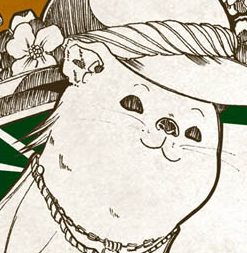
TYPOGRAPHER: JAN TSCHICHOLD
One of the first things I read up on Jan Tschichold was a short blurb somewhere about his contributions to Penguin Books. Immediately after, I did a quick search to find out how he looked like and I really hope I’m not the one who thinks that he bears a little bit of resemblance to a penguin. It might be the suit.
A side by side image comparison
That aside, it was really cool to learn what made him one of the biggest typographers of 20th Century.
Some things that I’ve learnt that could have contributed to his role as an important typographer:
- Creation of Sabon (as well as a few other fonts such as Saskia, Transit and Zeus)
- Die neue Typographie, meaning ‘New Typography’
- Briefly the head of Penguin Books’ typography and production, standardizing the look of all Penguin books.
Who is Tschichold?
First a calligrapher, then later developing into a typographer and book designer as well. He was passionate about black letters and script but later moved on to simple, geometric letters, likely influenced by a Bauhaus exhibition in 1924. He later developed an extreme belief in every other typeface, other than sans-serif, and also wrote about Modernist typography.
Later on, however, Tschichold did admit that the book was too extreme and rigid and returned to Classicism in print design.
His stint at Penguin Books
I focused on first finding out what exactly was so incredible about his stint at Penguin Books.
The final logo chosen in 2003 is based on the 1946 version by Tschihold, and is still used today with the occasional minor alteration to the penguin (such as giving it a hat). I’ve read lots of Penguin Books myself, so it feels like it would be very relevant information.
I’ve seen a couple of different covers:
The Great Gatsby cover is an example of one that is standardized by Tschichold. It is highly similar to the middle one. An article from The Writers Academy points out that the font was changed to Gill Sans, the middle white space was enhanced and the logo updated.
From what I can see, the penguin logo was simplified to elegant curves. No longer was there a heavy ‘Penguin Books’ looming over the cover as well, instead replaced by the skinny Gill Sans, reducing the competition to the middle section of the page where the book title was written.
The more I looked at it, the more I thought about how intelligent this minute change was – it immediately directed my eyes to where information needed to be conveyed. It didn’t feel clunky and chunky as well, and this might be abit of a stretch, but I actually felt refreshed and ready to read more as the layout of the cover felt lighter instantly.
Just from this, I definitely feel that Tschichold’s works focus on communication. I felt a sense of focus and a strong, singular voice. His works are crisp and broken up beautifully, with precise control and never chaotic.
Laster Der Menschheit, poster by Tschihold for Phoebus Palast (1927)
When I look at more examples of his works such as his poster designs, it’s almost as if someone slipped a lead around my neck and is guiding me clearly through different sections of the graphic. The clarity in the way he conveys information never fails to startle me as my eyes know exactly where to go every time.
Page Canons, Page Harmony
Convenient gif from the Retinart article that shows how text blocks are determined
I’m (honestly) not much of a reader and a very visual person. Going through this article definitely drove me a little crazy until I saw the gif.
Then it suddenly clicked.
I saw the magic in it.
The text block had the same 2:3 page size ratio, the height of the textblock is equal to the width of the page, and I kept scrolling back to pick up everything. It reminds me of the math behind drawing perspective and products in drawing classes – mathematical perfections! It really reminds me of how much math, design and drawing are intertwined.
Then comes Tschihold – a man who’s able to play with the minds of people through his understanding and application of math in his design. He improves on what seems to already be considered perfection – a canon, a sacred rule. He creates his own, new canon that works beautifully.
There’s so much more to it than just ‘an eye pleasing book’. It’s definitely something I’d like to try out myself sometime!
A Wrap
Essentially, I feel that Jan Tschichold is an extremely meticulous and calculative man – I could feel it from his works! I could feel that every part was deliberated. However, I was pleasantly surprised a man who sees things in such detail was able to pull himself out of his phase of extremity in the middle. His achievements were amazing and extremely admirable as well.
From him, I definitely could learn to cultivate more interest in the formula and math of successful book designs and typography. I’d definitely like to learn and shape my view of what would be considered beautiful books and beautiful texts. It’s already beginning to shift slightly after reading and learning from his canons, works and experiences.
He especially makes for a really great start to understanding more about the printing world and industry.
References:
The Writer’s Academy article: https://thewritersacademy.co.uk/blog/book-cover-design/
Typographica: https://typographica.org/typography-books/jan-tschichold-master-typographer/
Page Canons (GIF): http://retinart.net/graphic-design/secret-law-of-page-harmony/









